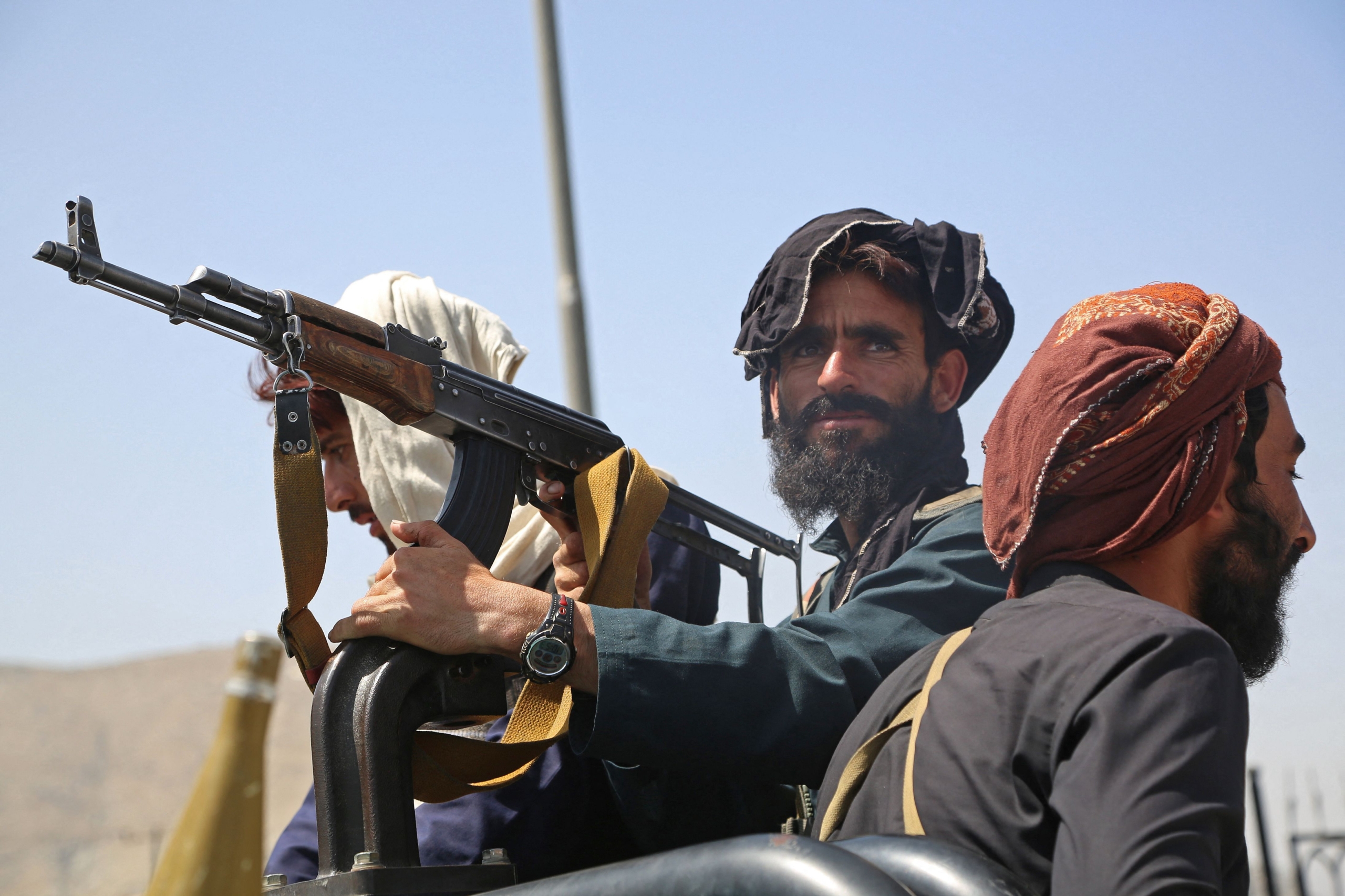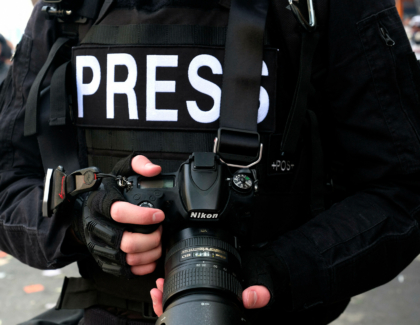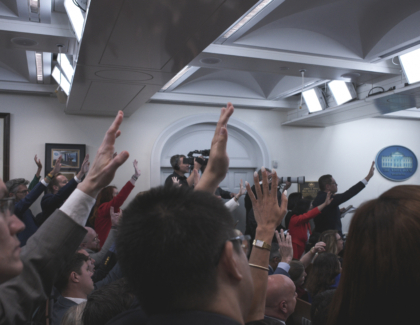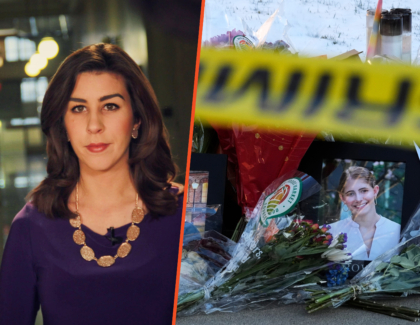Sign up for the daily CJR newsletter.
After the government in Afghanistan fell last year, the darkness was rapidly closing in.
Hundreds of journalists were forced to leave Afghanistan. Many are in hiding, hoping to do the same. Some have tailored their content to ensure they stay on the right side of strict Taliban media guidelines—issued after the group promised to honor a free press. Others who stood defiant have been beaten by threats and violence.
Waliullah Rahmani fears that recent history is being repeated and Afghanistan is once more becoming an invisible, ungoverned space where terrorists thrive and jihadism threatens the security of the world.
“It is inevitable,” Rahmani said from his own place of safety in northern Europe. “You will see the situation of the 1990s repeated. International terrorist organizations will come to Afghanistan, and because there is no one to see them, they will operate freely. And then, if not another 9/11, then something—a big, big threat to international security will, for sure, take place.”
Farshad Fattahi was an investigative reporter in the western city of Herat with independent ASR Television. In late July he went to Kabul for research. While he was away, the Taliban took control of Herat and closed down the station.
He lives in a secret location in the capital, with no money and no income, afraid for his life as the work that was once his living is now his liability. He hasn’t been back to Herat, or seen his family, since he left. “I am very afraid that my identity will be revealed, and if this happens it will mean big trouble for me,” Fattahi said.
Fattahi is just one of the hundreds who have been unable to find a way out of Afghanistan and to safety; vulnerable people like Fattahi are trapped, aware of the consequences of being found by the Taliban.
Almost as soon as they took control, the Taliban began detaining and beating journalists; at least two were beaten so badly after being detained while covering an anti-Taliban protest by women in September that one has lost part of his hearing and eyesight.
Last fall, media regulations were issued, aimed at ensuring the only news fit to print is that which suits the Taliban. News organizations must coordinate with the Taliban, curtailing critical independent reporting.
Human Rights Watch described the new regulations as so vague and sweeping that journalists are self-censoring for fear of falling foul of the Taliban and ending up in prison.
Related: Reporting on America’s longest war
The Taliban’s return came almost twenty years to the day after the United States invaded Afghanistan, on October 7, 2001, and ended their five-year regime in retaliation for giving sanctuary to Al Qaeda while the 9/11 attacks were planned and carried out.
During that time, the Western alliance poured in billions of dollars to create a modern, democratic state. The United States alone invested $1 billion in building media and communications, and was largely paid back with a vibrant sector of dedicated, world-class professionals.
It was a source of pride—a bright light shining on a corrupt polity and poorly managed international military and aid efforts. Hundreds of millions of dollars disappeared into the pockets of politicians, businesspeople, community leaders, and aid administrators. Afghanistan’s journalists played their role in holding them to account. Many reporters, broadcasters, photographers, and camera operators were killed.
In recent years, that independence was challenged by the president, Ashraf Ghani, who fled Afghanistan on August 15, clearing the way for the Taliban. He held media in contempt and followed the lead of Donald Trump in branding criticism of him or his administration “fake news” to undermine public trust in journalism.
Even before the Taliban’s return to power, eleven journalists had been killed in Afghanistan in 2021, including Danish Siddiqui, a Pulitzer-winning Indian photographer with Reuters, who was embedded with Afghan Special Forces near the Pakistan border on July 16.
According to unesco, eighty journalists have been killed in Afghanistan since 2005; the worst year was 2018, when nine journalists covering a suicide attack were killed by a second bomb aimed directly at media.
The Taliban campaign against journalists picked up in 2020, after they signed a bilateral deal with Trump that pledged a US military drawdown, to zero, by May 1 of 2021. The deal bypassed and undermined Ghani’s government, transforming the insurgents into a legitimate political entity. They declared victory over the Western alliance and ignored the conditions of the deal that applied to them, including cutting ties with Al Qaeda.
Instead, their brutality against Afghan civilians and military intensified, and journalists became specific targets, along with politicians and government officials, human and women’s rights advocates, judges, police, and military leaders.
Of the media outlets still operational on August 15, “70 percent have disappeared,” Rahmani said. “This is natural, because the Taliban have never been tolerant of media; they censor; they don’t allow any narrative but their own.”
Related: ‘I fled one war, and I was trapped in another’
Journalists were among the thousands evacuated in the chaotic international airlift that followed the August 15 Taliban takeover, according to Najib Sharifi, head of the Afghan Journalists Safety Committee. By his own rough estimate, in the weeks following the collapse of the republic, around two hundred journalists had left the country and, he said at the time, “at least another three hundred need to get out.” They are spread all over the country, he said, though “journalists in the provinces are much more under threat” now that independent reporting has become a thing of the past.
International media-support organizations have largely failed to provide the help that Afghanistan’s journalists have needed in a time of extreme distress.
Many who do arrive in Western capitals find that the support they are offered can come with strings attached—conditional, for instance, on applying for asylum and being sucked into the maw of the global refugee bureaucracy, often not permitted to work while their applications are processed, which can take years.
Reporters Without Borders, for instance, was able only to provide journalists with “basic information about the asylum process, and explain [to] them which organizations will be able to support them during the asylum process,” according to Victoria Lavenue, the organization’s head of assistance in Paris.
This presupposed that journalists wished to give up their professional status and enter the refugee bureaucracy, effectively becoming wards of the state, unable to work or live independently, often for years, while their applications for resettlement were processed.
More than a hundred journalists from Afghanistan issued an open letter via Reporters Without Borders begging international organizations to pressure the Taliban to embrace freedom of speech and free media. Their call goes unheeded.
As the new regime’s intentions unfurled, Afghanistan’s media owners adopted differing tactics for survival, some loudly holding on to their journalistic principles, others morphing into what one former news executive called the “Taliban’s propaganda platforms.”
Rahmani—who was already living under extreme threat when the republic fell—went into hiding immediately after the Taliban entered Kabul. His website, Kharbanama, and Reporterly, a daily subscription roundup of significant news on Afghanistan, went silent until Rahmani reemerged in late September in northern Europe. He rebranded and relaunched the newsletter as Brevity. Now he needs to find his way to an English-speaking country where he can continue working—and avoid the asylum trap.
It’s a different story for ToloNews, owned by the Moby Group, which was established in 2003 and funded largely by American taxpayers, with startup money from the US Agency for International Development. It pioneered 24-hour TV news, as well as entertainment programming. Its owner, Saad Mohseni, has been compared to Rupert Murdoch—and attended the Australian mogul’s recent star-studded birthday party.
Immediately after the Taliban entered the capital, Tolo management tried to preempt their clampdown and ordered women presenters to, first, stay at home and then, when they were allowed back to work, to alter their dress to appear more conservative, as Farid Ahmad, the station’s former deputy operations director, wrote in an article for Newsweek.
Former Tolo journalists said they were directly threatened by the Taliban. Some spent weeks working, eating and sleeping in their offices in the Moby compound in central Kabul as Taliban gunmen repeatedly visited their homes, searching for them by name.
Many Tolo employees were evacuated from Kabul immediately after the capital fell. They are now scattered around the world, in Pakistan, Qatar, Mexico, Turkey, and Albania, waiting for resettlement. Many received an email from Tolo immediately after they left Afghanistan terminating their employment. Many said they have not received their August salary. Many more are desperate to leave.
While Tolo’s owners had made an obvious effort to stay on the right side of the Taliban—even while requesting funding from the State Department to relocate operations outside Afghanistan—one crusading daily newspaper tried to stick to its journalistic principles. Etilaatroz made its reputation revealing the filthy underbelly of Afghanistan’s powerful and connected. In the days after August 15, when anti-Taliban protests erupted in major cities, its coverage was as hard-hitting as usual, with editors and journalists alike vowing that their mission to uphold freedom of speech would not be compromised.
And then, on September 8, video journalist Nemat Naqdi and photojournalist Taqi Daryabi drew global attention for the injuries they sustained under Taliban torture. They were detained while covering a women’s rights demonstration in Kabul and held for two days. Publisher and editor Zaki Daryabi—Taqi’s brother—said Naqdi has lost 40 percent of the sight in one eye and needs surgery to repair a burst eardrum.
Zaki Daryabi, who won Transparency International’s Anti-Corruption 2020 award, said that Etilaatroz now publishes just a few news stories a day, having decided that the hard-hitting investigations into official graft that made its reputation would risk further violent reaction from the Taliban.
Zaki left Afghanistan in mid-October, forced to flee his homeland, he said, in fear for his life “under threat from the Taliban.”
Has America ever needed a media defender more than now? Help us by joining CJR today.







